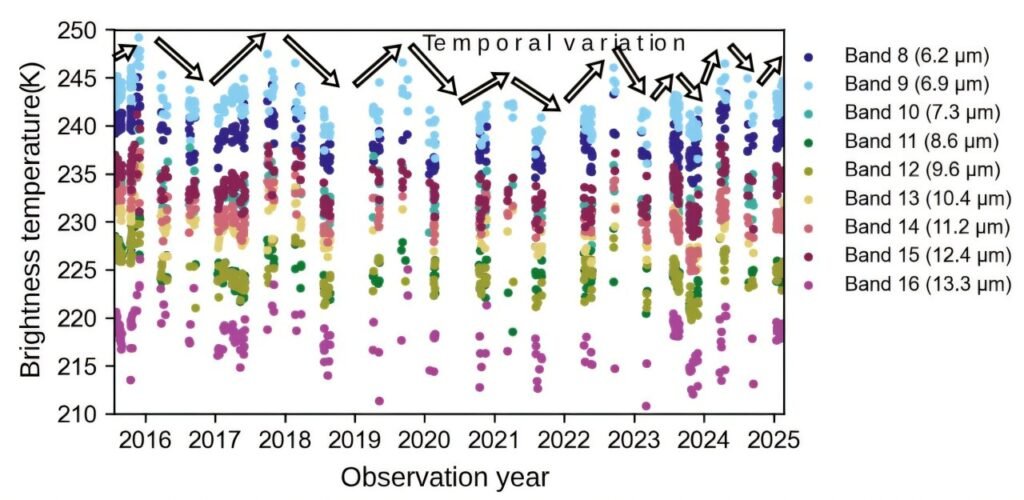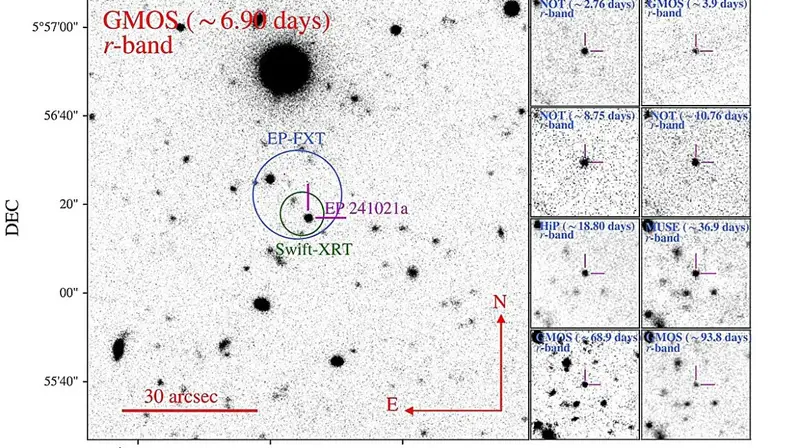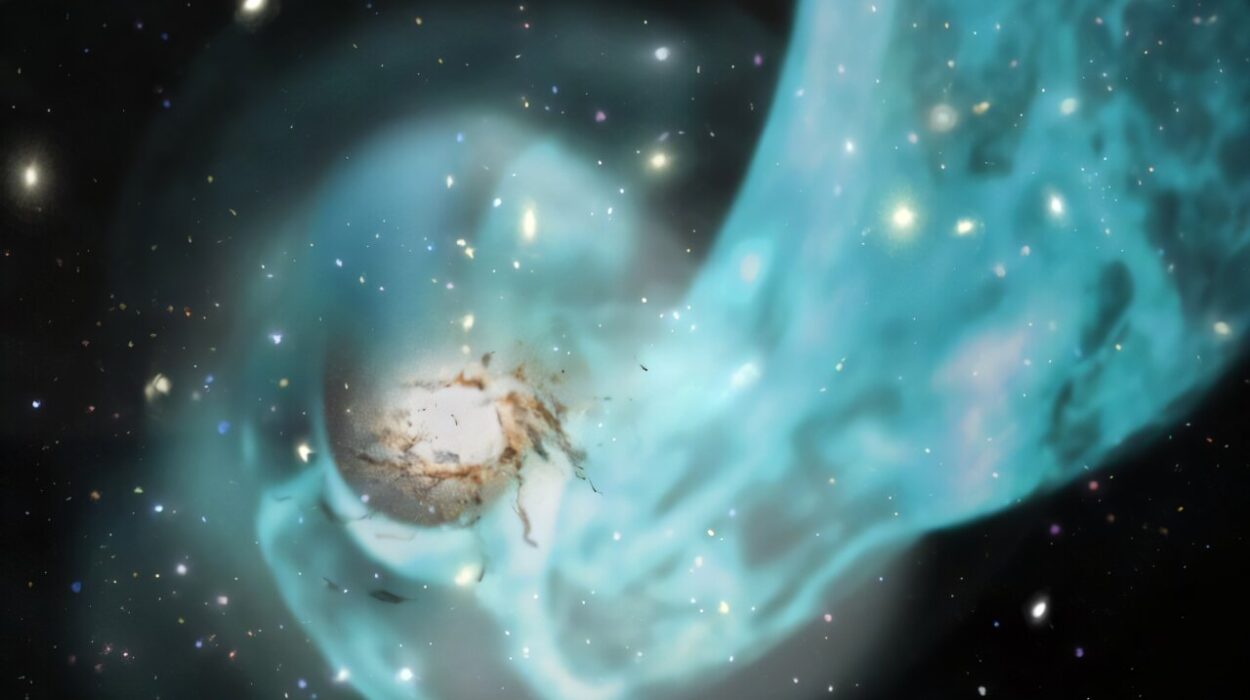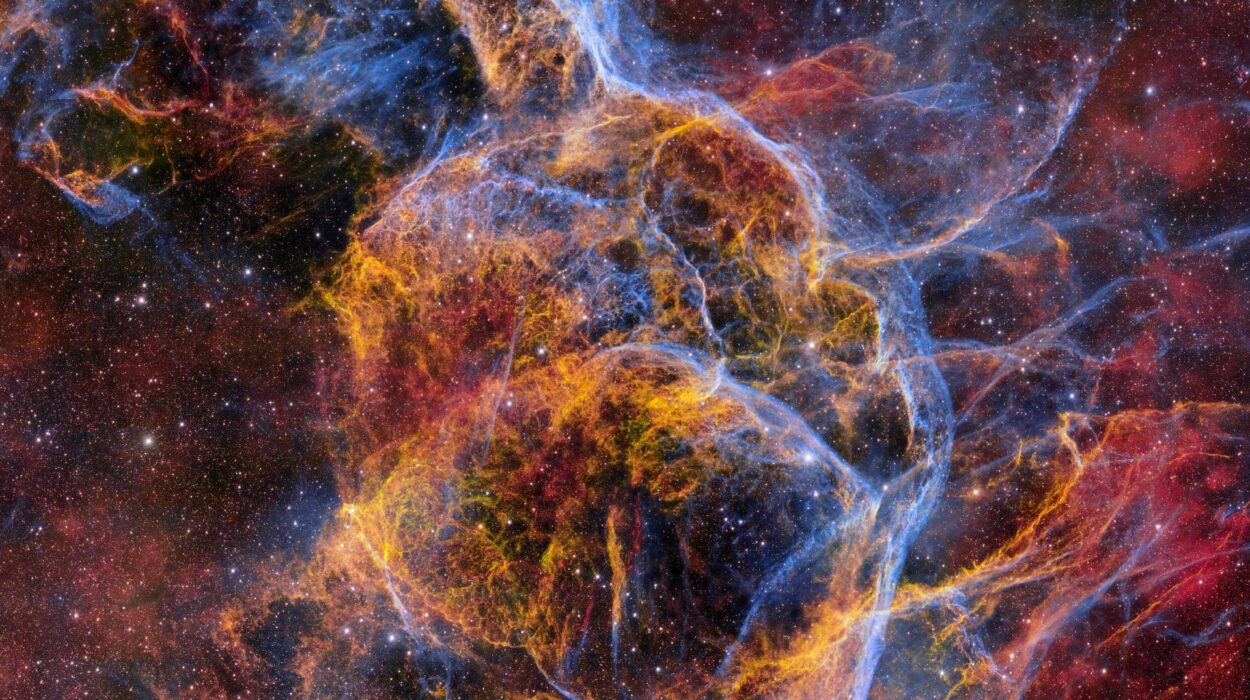It started with something unexpected—an accidental guest in the background of images meant only for Earth. While scanning through routine photos captured by Japan’s weather satellites, scientists noticed a tiny, glowing dot that wasn’t supposed to be there. That dot was Venus, our closest planetary neighbor, peeking from the shadows.
But this wasn’t just a pretty photobomb. It was a scientific gift.
Using these serendipitous snapshots, an international team of researchers led by Gaku Nishiyama—affiliated with the German Aerospace Center, the University of Tokyo, and Japan’s National Astronomical Observatory—has pieced together nearly a decade of atmospheric data from a planet so hostile it’s been called Earth’s evil twin.
Their findings, now published in Earth, Planets and Space, not only reveal subtle but persistent weather patterns on Venus, but also hint at a powerful new way to study other planets—using satellites not originally designed for space exploration at all.
Weather Satellites With an Accidental Superpower
The satellites at the heart of this discovery are Himawari-8 and Himawari-9, Japanese geostationary weather satellites operated by the Japan Meteorological Agency. Orbiting 36,000 kilometers above Earth, they capture images every 10 minutes to monitor cloud patterns, storms, and typhoons over the Asia-Pacific region.
Each satellite carries the Advanced Himawari Imager, which can see in 16 wavelengths, including several bands of infrared light—ideal for measuring temperatures.
The field of view of these satellites is just a bit wider than Earth itself. And in that extra sliver of space, other celestial objects sometimes sneak in. That’s how Venus ended up in the frame—not just once, but 437 times.
A Dot That Speaks Volumes
Venus doesn’t show up as a swirling disk or detailed landscape in these images. It appears as a mere dot—sometimes no more than a smudge against the darkness. But for the scientists, that dot was a treasure trove.

“Even just a dot is enough,” said Nishiyama.
By studying the infrared light coming from that dot, the team was able to infer the temperature of Venus’s upper atmosphere—specifically, the thermal structure between altitudes of about 65 and 85 kilometers. They analyzed the data across nearly 10 years of satellite records, building a long-term timeline of how the planet’s atmosphere has been changing.
One of their key findings? The greatest temperature changes occurred around sunrise on Venus, likely caused by atmospheric waves circulating around the planet.
Why Venus is So Hard to Watch
Venus has long teased astronomers with its beauty and mystery. Its thick, golden clouds conceal a surface where temperatures soar above 460°C (860°F) and atmospheric pressure is 92 times that of Earth’s. It’s the stuff of science fiction nightmares—lava plains, acid rain, and crushing winds.
Studying it is no easy feat. Ground-based telescopes struggle due to Venus’s position close to the Sun, often lost in glare. Space missions, while valuable, are few and far between. They’re expensive, risky, and often only provide short bursts of data during flybys or orbiters’ limited lifespans.
That’s what makes this new method so remarkable. It doesn’t require new probes or expensive missions—just a sharp eye and a willingness to look at old data in new ways.
A New Frontier in Planetary Science
This breakthrough is more than just a Venusian weather report. It opens a door to a new way of doing planetary science—using existing Earth-focused satellites as accidental space telescopes.
“There are many more weather satellites than just the Himawari family,” noted Nishiyama. “Other planets occasionally appear in their images too.”
Mars, Jupiter, even Saturn—on rare occasions, they show up in the background of Earth satellite photos. Each of these sightings is an untapped dataset waiting to be explored. Combined with data from space probes, these incidental images could extend our planetary observations over decades, not just the brief windows offered by dedicated missions.
Rethinking the Tools of Discovery
The elegance of this research lies not just in what it discovered, but how it discovered it. In a world obsessed with high-budget missions and cutting-edge instruments, Nishiyama’s team reminds us that discovery can hide in the mundane, if only we look carefully enough.
The Himawari satellites weren’t designed to study Venus. But because of their stability, high resolution, and constant observations, they ended up creating the most consistent long-term dataset of Venus’s weather ever collected.
By turning Earth-watching satellites outward, we’re starting to blur the boundary between planetary science and meteorology. And the possibilities are exciting.
Venus’s Weather, Revealed
So, what exactly did the team find?
Across the 437 images containing Venus, they measured temperature changes in the planet’s upper atmosphere. These changes revealed patterns and shifts over time—particularly during Venusian dawn, when the atmosphere responds dynamically to the first sunlight. The researchers believe this is due to thermal tides and planetary-scale waves—massive air currents that roll across Venus’s skies like ocean waves.

On Earth, we see similar effects in the jet stream or during the shifting of seasons. On Venus, these atmospheric waves may be part of what drives the super-rotation—a bizarre phenomenon where the entire atmosphere circles the planet in just four Earth days, much faster than the planet itself rotates.
This gives scientists new clues about the dynamics of Venus’s climate—and even why it ended up so different from Earth, despite being so similar in size and composition.
A Cosmic Coincidence Becomes a Scientific Tool
If not for a coincidence of orbits and camera angles, none of this data would exist. Venus simply showed up in the background of Earth imagery, again and again, a faint visitor on a familiar stage.
What started as an unexpected photobomb turned into a decade-long weather study of another world.
It’s a reminder that in science, the most powerful discoveries don’t always come from the flashiest instruments or most ambitious missions. Sometimes, they emerge from simply noticing what’s in the background—and having the curiosity to ask, what is that dot?
The Future is in the Frame
As we build more satellites, collect more data, and launch more probes, perhaps we’ll also become more skilled at looking sideways—finding hidden gems in old archives, surprise discoveries in familiar views.
Nishiyama and his team have shown that the sky holds more than meets the eye, even when we’re not looking for it. And somewhere in a satellite image meant for tomorrow’s weather report, another planet might be waiting to whisper its secrets.
Reference: Gaku Nishiyama et al. “Temporal variation in the cloud-top temperature of Venus revealed by meteorological satellites”, in Earth, Planets and Space, DOI: 10.1186/s40623-025-02223-8






